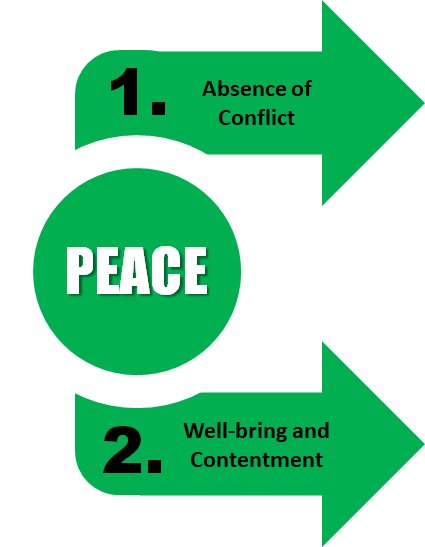 |
Hari Srinivas |
|
Viewpoint Series E-216
|
Abstract
This paper reframes peace not merely as the absence of conflict, but as a dynamic and inclusive process essential for achieving sustainable development. It argues that peace must be rooted in equitable social structures, responsive governance, access to education and livelihoods, and environmental sustainability.
Drawing on GDRC's dual framework, the paper highlights two critical dimensions of peace: well-being and contentment, and the proactive mitigation of conflict drivers such as climate change, environmental degradation, and political instability.
Central to this approach are the "Three Cs" - Consensus, Coordination, and Cooperation - which act as enablers in embedding peace across diverse policy domains. The paper calls for integrated, participatory strategies that position peacebuilding as both a foundation for and a goal of sustainable development.
Keywords
Sustainable development, Peacebuilding, Governance, Social equity, Environmental security, Consensus, Coordination, Cooperation
|
Background
Peace is commonly understood as the absence of war, violence, or open conflict. While these are essential conditions, they represent only one side of the peace equation. It may be useful to adopt a more comprehensive perspective, viewing peace as a dynamic and inclusive process that also involves the issues of well - being, justice, and opportunity.
In this sense, peace becomes a proactive condition - built through equitable social structures, responsive governance, access to education and livelihoods, and sustainable use of natural resources. It is deeply tied to the idea of development that is not only sustainable, but also fair and inclusive.
Ultimately, peace will have to be embedded in everyday systems, from how cities are managed and communities are engaged, to how natural resources are shared and policies are formulated. Rather than focusing solely on the cessation of hostilities, public policies will have to emphasize the creation of conditions in which conflict is less likely to arise in the first place.
This approach recognizes that long - term peace is not simply negotiated or enforced, but cultivated - through social consensus, institutional coordination, and active cooperation across sectors and stakeholders. Peace, in this view, is both a foundation for sustainable development and a result of it.
GDRC's Dual Framework
GDRC approaches peace through two interlinked lenses as illustrated in Figure 1:
 |
- Economic development
- Good Governance
- Access to education
- Income generation, jobs and skills
- Poverty reduction
- Healthy communities
- Multiculturalism
|
- Disarmament and cessation of hostilities
- Climate change and access to natural resources
- Political leadership
- Natural disaster risk reduction
- Environmental degradation
|
Figure 1: The dual dimension of Peace
1. Well-being and Contentment
Peace is nurtured when basic needs are met, and individuals and communities can thrive.
This will happen when peace initiatives foster:
- Economic development - Through local entrepreneurship promotion in post - conflict regions, such as community-based ecotourism programs that generate income while preserving natural heritage.
- Good governance - By strengthening participatory local governance in urban slums, helping residents engage in budgeting and planning processes.
- Access to education - Via digital literacy initiatives in refugee communities, enabling youth to gain skills and access opportunities.
- Income generation, jobs and skills - Through training programmes for informal sector workers to transition into formal employment, improving livelihoods and social stability.
- Poverty reduction - By promoting microfinance and self - help groups in underserved communities.
- Healthy communities - Through campaigns on environmental health and sanitation in disaster - prone areas.
- Multiculturalism - By facilitating intercultural dialogue workshops in culturally diverse cities to prevent xenophobia and foster social cohesion.
2. Absence of Conflict
In addition to well-being and contentment, we also need to acknowledge the need to proactively address the drivers of instability and insecurity:
- Disarmament and cessation of hostilities - Supporting city- level initiatives that encourage the transformation of former military zones into public spaces.
- Climate change and access to natural resources - Engaging local communities in watershed management to mitigate resource - based conflicts.
- Political leadership and accountability - Encouraging transparency in local governments through open data platforms.
- Natural disaster risk reduction - Working with vulnerable urban areas to create community - based disaster preparedness plans.
- Environmental degradation - Promoting urban greening and waste reduction campaigns to enhance environmental security.
Core Approach: The Three Cs
At the heart of peace-building initiatives are three essential principles: concensus, coordination and cooperation.
| Consensus |
Building shared understanding and mutual agreement across different stakeholders, fostering dialogue and inclusivity in decision-making.
Community dialogues need to be facilitated to build shared understanding on development priorities. For example, in multicultural urban neighborhoods, participatory mapping exercises can be supported to help residents from diverse backgrounds co-develop visions for their shared spaces. |
| Coordination |
Aligning efforts across sectors and governance levels to avoid duplication, fill gaps, and enhance systemic responses to peace and development challenges.
In urban settings, for example, municipalities, academic institutions, and NGOs need to connect to align efforts in areas such as environmental policy, sustainable transportation, and disaster response to aim for better quality of life (QoL). |
| Cooperation |
Establishing long-term trust and collaboration among actors - government, civil society, private sector, and communities - to work toward common goals.
Multi-stakeholder partnerships, for example where schools, local governments, and businesses cooperatively develop environmental education curricula focused on peace and sustainability. |
Together, Consensus, Coordination, and Cooperation are seen as enablers of sustainable peace, embedded across different policy themes, from urban development and environmental management to education and governance.
By reframing peace as both a precondition and an outcome of sustainable development, we need to promote an integrated vision where equity, resilience, and community empowerment are central. It needs to be grounded in participatory processes and systems thinking, making peacebuilding an integral part of local, national, and global sustainability agendas.


